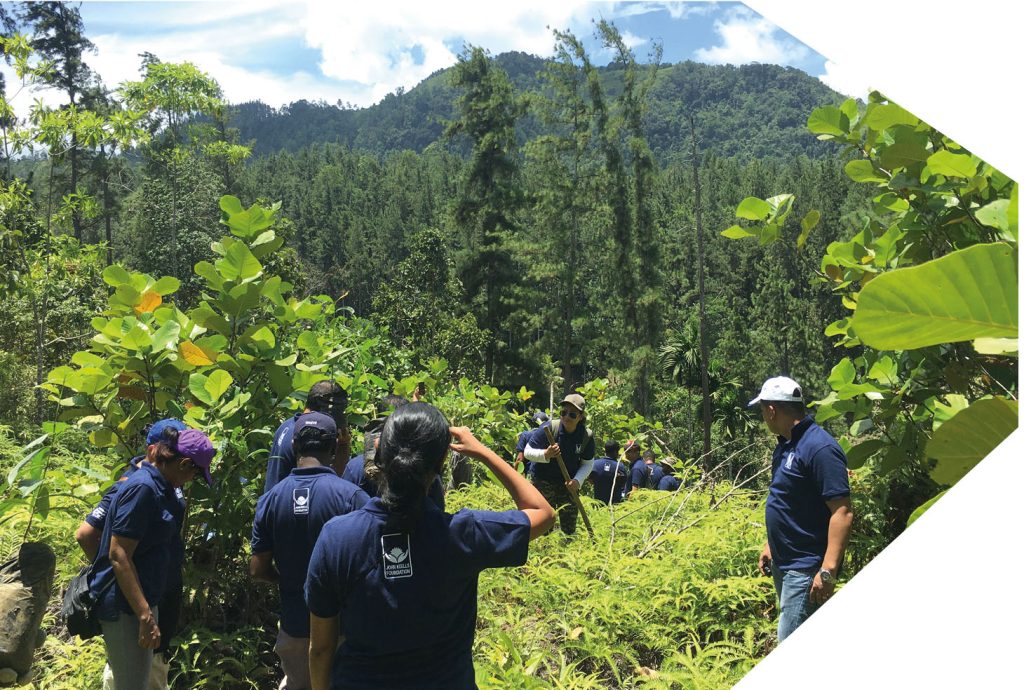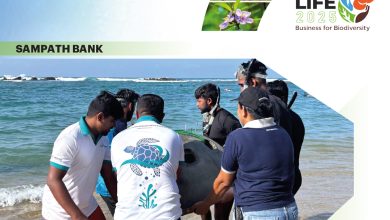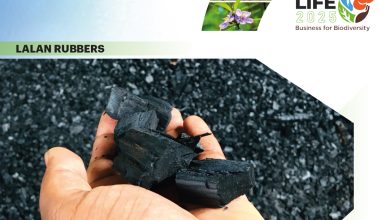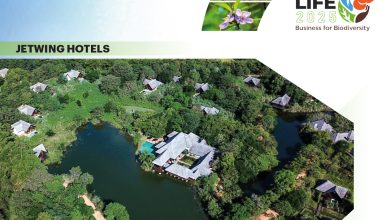CINNAMON HOTELS & RESORTS
Biodiversity Means Business:
A Decade of Impact,
A Future of Action
“Ecosystem recovery rarely delivers quick wins – but with persistence and transparency, the long-term impact is profound”

Launched in 2022, the Cinnamon Rainforest Restoration Project is one of the flagship biodiversity initiatives of Cinnamon Hotels & Resorts.
Its vision is to revive a 59 acre degraded rainforest site in Suduwalipotha, Ratnapura, located within the buffer zone of the Sinharaja Forest Reserve – Sri Lanka’s last remaining lowland tropical rainforest and a UNESCO World Heritage Site. The land had suffered decades of ecological decline due to monoculture farming and invasive species.
To address this, the John Keells Foundation and Cinnamon Hotels & Resorts partnered with the Department of Forest Conservation, Ruk Rakaganno and expert ecologists from Cinnamon Nature Trails, adopting assisted natural regeneration (ANR) to accelerate forest succession.
As of June 2025, more than 23,000 native plants from 104 species had been introduced including endangered and endemic trees. Biodiversity has measurably improved with native flora increasing from 92 to 123 species and fauna from 189 to 251.
The project has also fostered wide employee and community engagement. A team of 26 colleagues from Cinnamon Life recently joined on-site activities – planting native saplings, removing invasive species and learning from local communities about traditional practices such as kurundu thaeleema (cinnamon layering).

MULTI-STAKEHOLDER COLLABORATION Unlike conventional tree planting campaigns that measure success by numbers alone, the project adopted ANR, a method that revives dormant native seed banks and removes invasive stressors to restore the forest ecosystem sustainably. This scientifically proven approach delivers long-term ecological resilience at lower cost and with higher success rates.
Further innovation lies in the project’s multi-stakeholder collaboration model, which brought together the public sector (Forest Department Sri Lanka), civil society (Ruk Rakaganno), corporate sustainability arms (John Keells Foundation) and scientific advisors (Cinnamon Nature Trails).
The project was further strengthened through independent ecological assessments, geospatial site mapping and community led nurseries. This integration of science, community ownership and volunteerism makes the project not merely a conservation effort but a living classroom that bridges corporate CSR with real world restoration.
LESSONS LEARNED The project encountered several challenges including invasive species suppression, climate unpredictability, sourcing endangered seedlings and ensuring sustained community engagement. One major risk was labour continuity, which was mitigated by building longstanding relationships with local families, and providing consistent training and employment through community run nurseries.
Ensuring scientific credibility was another key challenge. This was addressed by involving independent ecologists and implementing baseline and quarterly monitoring systems, enabling adaptive management as the forest matured.
A key lesson learned is that true restoration is slow, complex and people powered. Ecosystem recovery rarely delivers quick wins – but with persistence and transparency, the long-term impact is profound. Businesses must look beyond transactional CSR and commit to ecosystem based strategies that empower local stewardship.

SCALING IMPACT The organisation’s priority is to scale and replicate the Cinnamon Rainforest Restoration Project model across other degraded lands while deepening impact at the existing site. Goals include reaching a target of 100,000 trees by 2030, expanding species diversity, enhancing scientific research collaborations, and offering the site as a living laboratory for climate education and ecotourism.
This work directly supports several UN Sustainable Development Goals (SDGs): 17 (partnerships), 15 (life on land), 13 (climate action), 6 (clean water) and 8 (decent work). As global momentum builds around nature based solutions, the private sector must act not only as funders but active participants in restoring natural capital. Nature is not an externality – it is the foundation of resilience.
Investing in nature is a smart strategy – its returns may not appear in the next quarterly report but they endure for generations. This initiative stands as a catalyst to demonstrate that the private sector can conduct scientifically based restoration projects with measurable, lasting impact.
Email info@cinnamonhotels.com | Website www.cinnamonhotels.com





